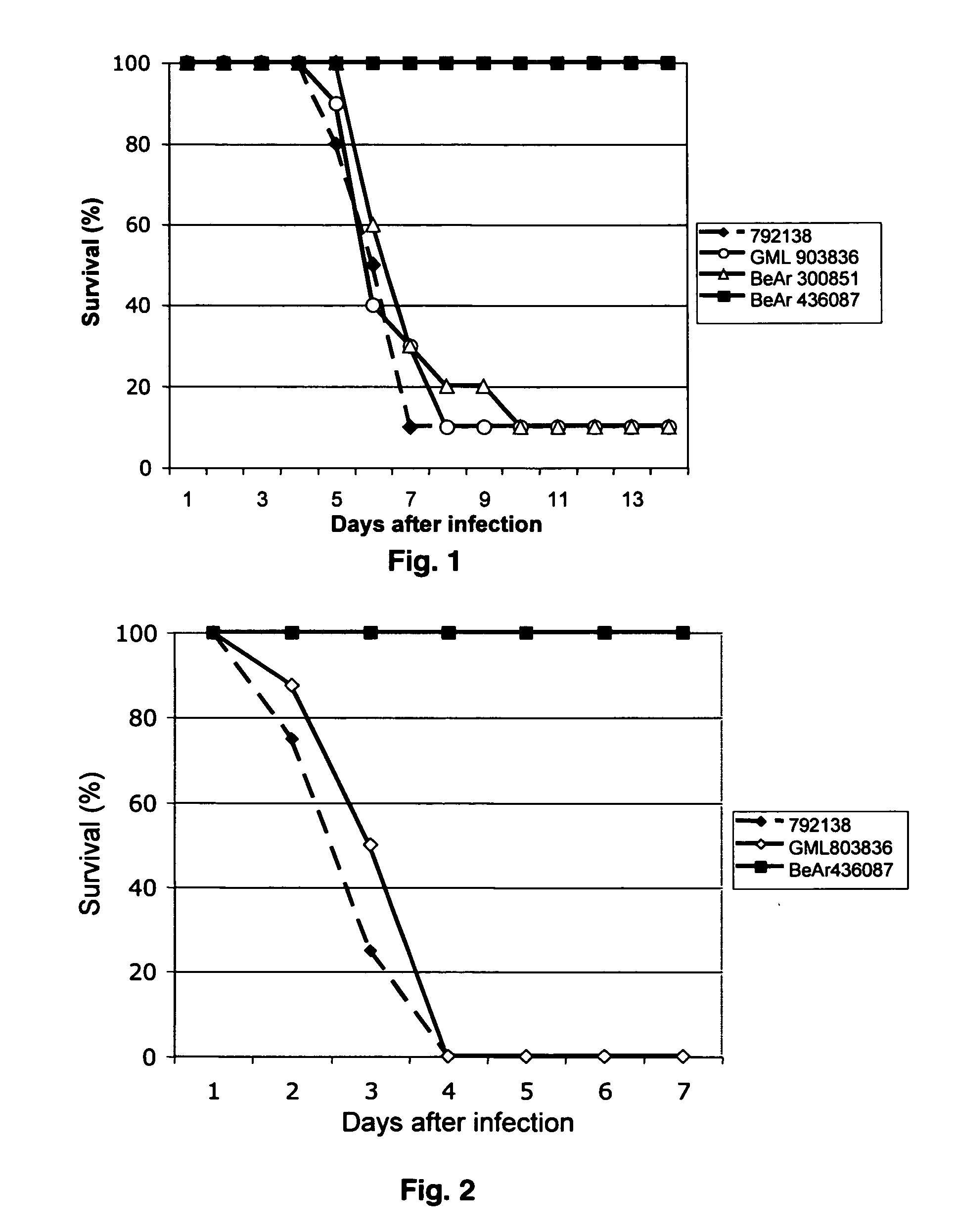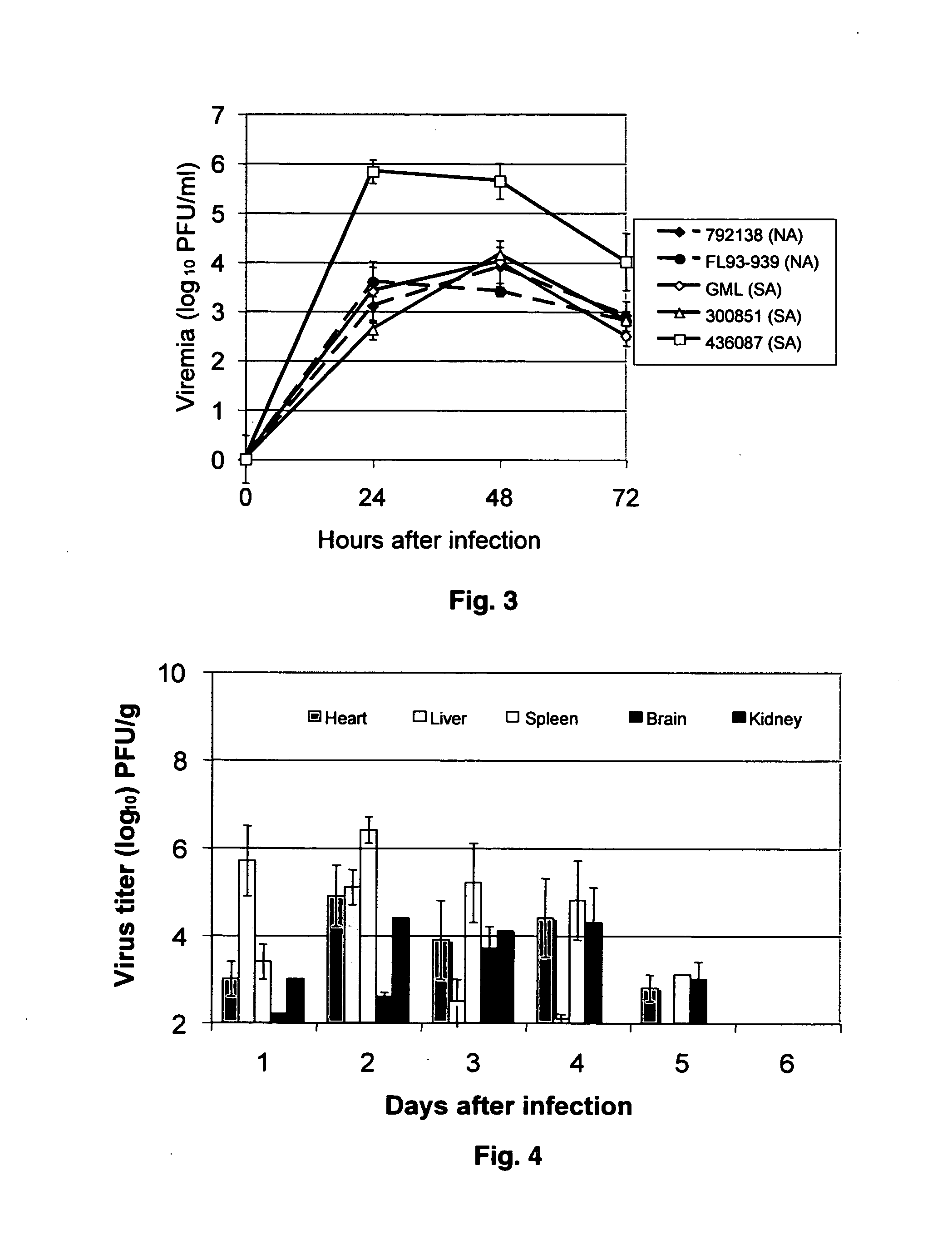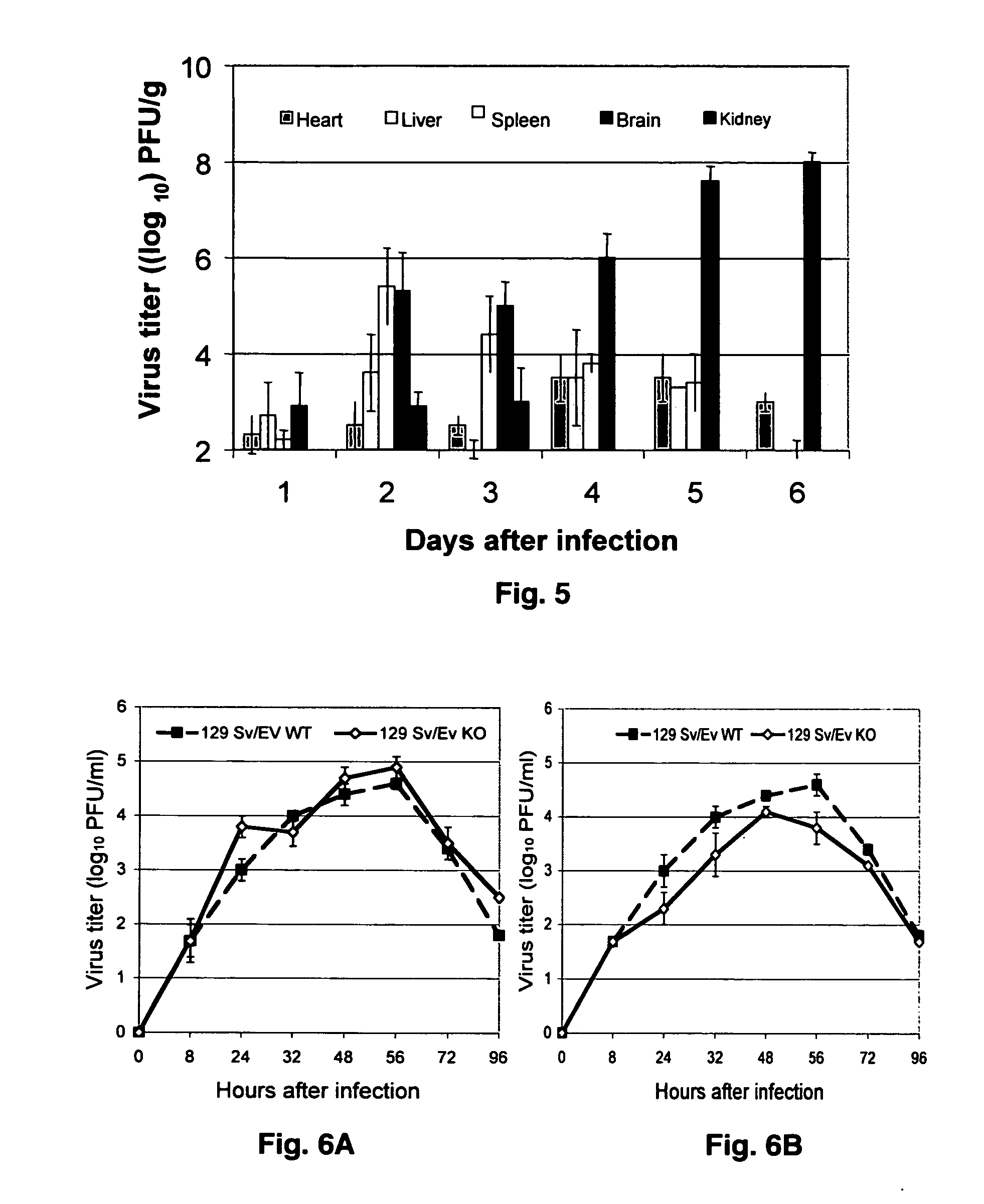Chimeric sindbis-eastern equine encephalitis virus and uses thereof
a technology of equine encephalitis and chimeric sindbis, which is applied in the field of molecular biology, virology and immunology, can solve the problems of disease and death, low human cases, and the current deadly eeev
- Summary
- Abstract
- Description
- Claims
- Application Information
AI Technical Summary
Benefits of technology
Problems solved by technology
Method used
Image
Examples
example 1
Viruses
[0065]The viruses used in the present invention (Table 1) were provided by the University of Texas Medical Branch World Reference Center for Emerging Viruses and Arboviruses. The strains were isolated in Vero cells from mosquitoes, and were chosen for these studies due to their low passage histories. Stocks were prepared in mice to avoid selection for attenuated alphavirus mutants that occur following passage in cells expressing glycosaminoglycans (Bernard et al. 2000; Byrnes & Griffin 1998; Heil et al. 2001; Klimstra et al. 1998). One- to 3-day-old mice were inoculated intracranially with each virus strain and a 10% suspension of homogenized brain tissue was prepared after morbidity or mortality was observed. The titers of the virus stocks were determined by plaque assay in Vero cells.
TABLE 1EEEV isolates used for experimental infectionsVIRUSPLACE OFYEAR OFSUB-PASSAGESTRAINISOLATIONISOLATIONTYPESOURCEHISTORY *GMLPanama1984SA IIMosquitoV-2 / SMB-1903836BeArBrazil1975SA IIIMosqu...
example 2
Infection of Mice and Hamsters
[0066]Five to 6-week-old NIH Swiss mice from Harlan Laboratories (Indianapolis, Ind.) were maintained under specific pathogen-free conditions. The animals were allowed to acclimate to the laboratory conditions for one week and then placed into cohorts of 5 for subcutaneous infection with EEE strains 792138, FL93-939, GML903836, BeAr 300851 and BeAr436087, and intracranial infection with EEEV strains 7921338 and BeAr 436087. Mice were subcutaneously infected with 1000 PFU of virus and intracranially infected with either 1000 PFU or 10E6 PFU of the same strains to compare the replication in the brain. The animals were bled daily (day 1-7) and monitored for clinical signs including fever, lethargy, paralysis or death for up to a month after infection. For the long-term antibody protection experiments, survivors were kept for up to three months and challenged with the EEEV strain 79-2138. To determine whether the attenuated BeAr 436087 strain was also aviru...
example 3
Virus Replication In Vivo and Histopathology
[0067]Four animals infected subcutaneously and three mice infected intracranially were sacrificed daily (days 1 through 7) for pathogenesis studies. Briefly, animals were anesthetized and the thoracic cavity of each mouse opened to collect blood by cardiac puncture. Then, each animal was perfused with phosphate buffer saline (PBS) to eliminate the blood-associated virus and brain, heart, lung, spleen, liver and kidney were harvested for viral titration and histopathological studies. Tissues were homogenized to make a 10% suspension in EMEM containing 20% fetal bovine sera, penicillin streptomycin and glutamine (10 μg / ml). The final suspension was clarified by centrifugation and stored at −70° C. for virus titration by plaque assay in Vero cells. Blood samples were plaque assayed and a plaque reduction neutralization test (PRNT) was used to measure the antibody response. Tissues samples for histopathological studies were fixed in 4% parafor...
PUM
| Property | Measurement | Unit |
|---|---|---|
| Electrical conductance | aaaaa | aaaaa |
| Volume | aaaaa | aaaaa |
| Fraction | aaaaa | aaaaa |
Abstract
Description
Claims
Application Information
 Login to View More
Login to View More - R&D
- Intellectual Property
- Life Sciences
- Materials
- Tech Scout
- Unparalleled Data Quality
- Higher Quality Content
- 60% Fewer Hallucinations
Browse by: Latest US Patents, China's latest patents, Technical Efficacy Thesaurus, Application Domain, Technology Topic, Popular Technical Reports.
© 2025 PatSnap. All rights reserved.Legal|Privacy policy|Modern Slavery Act Transparency Statement|Sitemap|About US| Contact US: help@patsnap.com



